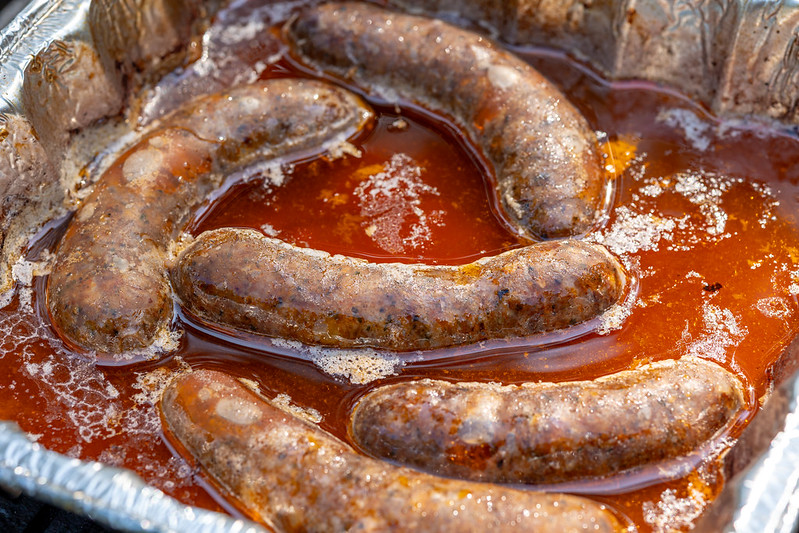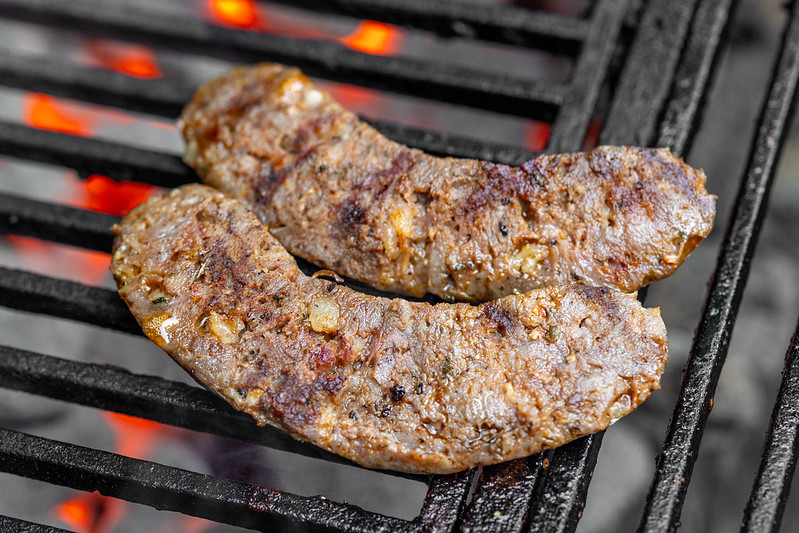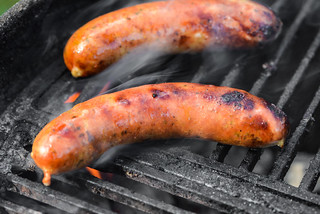Argentinian Chorizo
Choripán has long been on my radar to make at a Meatwave. The most common incarnation of this Argentinian sandwich is comprised of three ingredients—bread, sausage, and chimichurri—so I knew each of those had to be just right for it to come together in an appropriate manner. That's also probably why it took me so long to finally get around to making it since I've consumed so few choripáns in my life that I couldn't say for sure if I was even close. This only changed slightly after actually going to Argentina, but I at least had a few of these ubiquitous sandwiches there and that gave me a better point of reference to provide some confidence in venturing forth. While the sandwich was the end goal, first I needed Argentinian chorizo, and to get that, it required me to take matters into my own hands.
I had all my chorizos in Argentina as part of choripáns, so dissecting the exact ingredients in the sausage required help from existing recipes because I lacked the experience of eating this sausage all on its own. It helped that most of the recipes I found were all along the same lines and the major differences were the spices and amounts each used, while the meats and their ratio were all pretty consistent—you needed about one third of the mixture to be beef, while the rest was pork along with a high ratio of fat. So I started with beef chuck, pork shoulder, and pork fatback, all cubed up and left in the freezer to chill for about thirty minutes before starting to grind them all.
I didn't fully believe the need to keep everything as cold as possible when first making sausages, but I've come to learn that hubris was a primary downfall of my early sausage making endeavors, and I now keep all equipment and meat very chilled throughout the entire process. For a sausage like Argentinian chorizo, this matters even more so because it has a coarse texture and the meat and fat need to be kept near freezing in order for them to stay separated throughout grinding, seasoning, and stuffing.
From what I could tell from my limited Argentinian chorizo eating experiences was that this sausage didn't have an overly complex mixture of spices, but still came with a fair amount of heat. I saw some recipes for this chorizo that didn't use much more than black pepper, garlic, paprika and wine, but I decided to go a little deeper than that with oregano and nutmeg tossed into the mix too. To deliver the kick I wanted, I went in pretty heavy with the black pepper.
The first moment of truth was the frying of a test patty to check seasoning levels before stuffing. Based on my memory, I was pretty damn happy with what I tasted. The sausage did not have an overwhelming intense flavor like some other sausages I've made in the past—the pork and beef were very upfront, but there was a peppery and garlicky bite that stood up to the heaviness of the meat, then undertones of the other seasonings that tasted pretty correct to me.
So I felt confident with proceeding with stuffing, which was made easy thanks to my vertical stuffer that I always wish I had bought sooner after struggling for years trying to use the KitchenAid stuffer attachment. After all the meat was in casings, I tied them into six-inch links and placed all the sausages on a wire rack set in a sheet plan and let that sit in the fridge overnight to air dry.
For cooking, I would venture to guess that Argentinians likely never use a liquid bath to braise their links before grilling, but this method has been so clutch in grilling sausages perfectly every time that I always go with it, whether it's traditional or not. My first batch of chorizo I actually braised in the leftover red wine that went into the meat mixture, but that turned the links a dark purple color and led one of my guests to inquire if they were blood sausage. So I went with beer for the following batches.
After the sausages were brought up to an internal temperature of around 140°F, that's when I transferred them to be directly on the grill. They were first cooked to get some coloring on the exterior, then I split the links in half and cooked the cut side to get a good sear on that too. Finally, the chorizo went into toasted bread and were topped with chimichurri to finalize the choripán equation in a way that was incredibly satisfying since it tasted very much what I was hoping for. There will be more on that final sandwich coming in the future...










